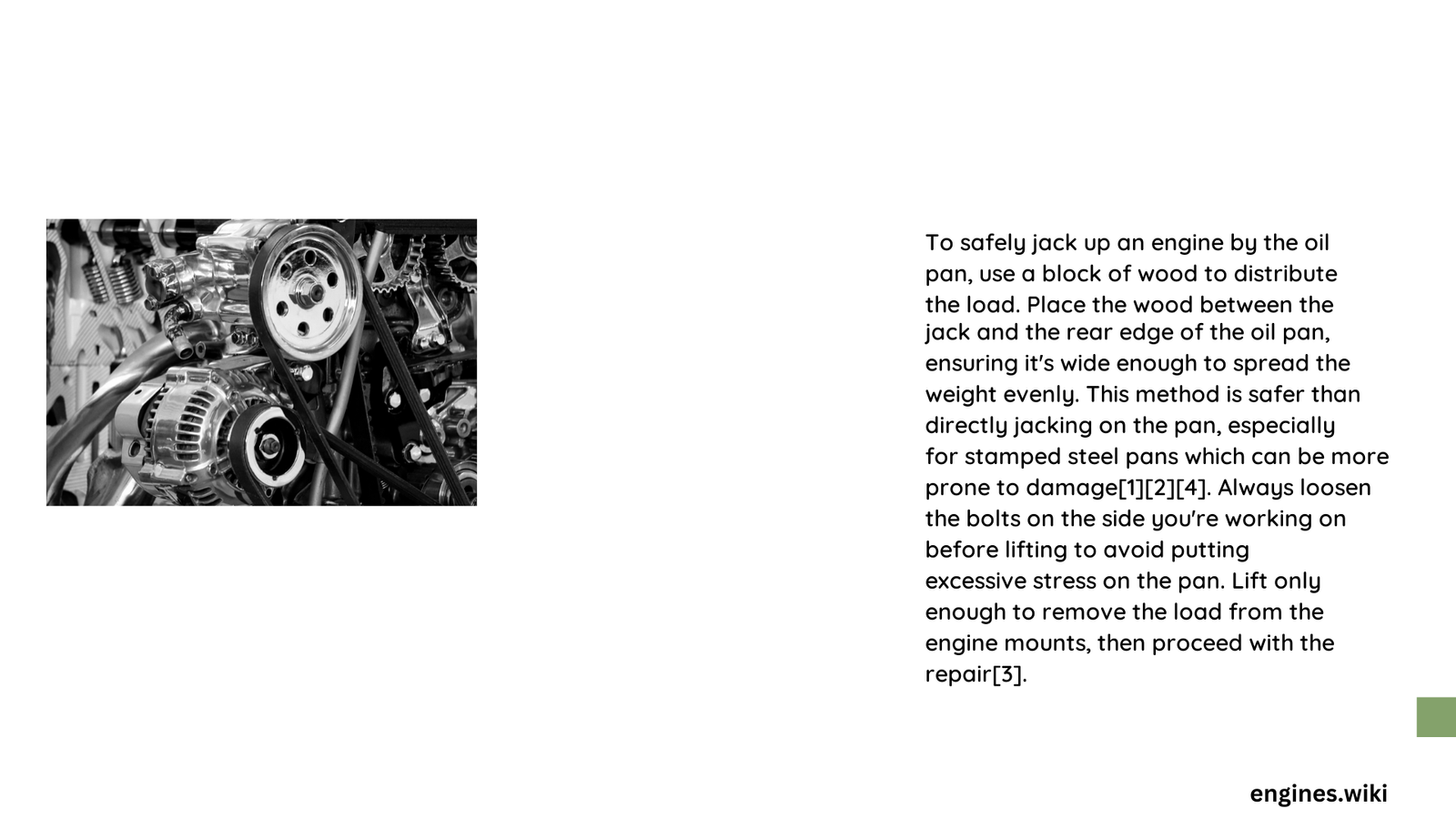Jacking up an engine by oil pan requires meticulous precision and specialized knowledge. Vehicle owners and mechanics must understand the complex process of safely lifting an engine, managing structural integrity, and preventing potential damage during maintenance procedures. This comprehensive guide provides expert insights into navigating the intricate steps of engine lifting, ensuring optimal performance and minimizing mechanical risks.
What Are the Essential Preparations for Engine Lifting?
Safety Equipment and Initial Setup
Before attempting to jack up an engine by oil pan, gather these critical tools:
| Tool | Purpose | Recommended Specification |
|---|---|---|
| Hydraulic Jack | Primary Vehicle Lifting | 3-ton capacity minimum |
| Jack Stands | Vehicle Support | Weight rating exceeding vehicle mass |
| Engine Hoist | Engine Positioning | Adjustable height, 2-ton capacity |
| Torque Wrench | Precise Bolt Tightening | 10-150 ft-lbs range |
Step-by-Step Lifting Process
Preliminary Vehicle Preparation
- Park vehicle on flat, stable surface
- Engage parking brake
- Chock rear wheels
- Disconnect negative battery terminal
Engine Lifting Sequence
- Drain engine oil completely
- Remove lower engine covers
- Support transmission
- Loosen engine mount bolts
- Position jack under engine block
- Gradually lift with controlled movements
How to Prevent Potential Damage During Engine Lifting?

Critical Alignment Considerations
Proper engine alignment prevents:
– Structural stress
– Mount damage
– Potential misalignment complications
Key Alignment Techniques:
– Use manufacturer-recommended lifting points
– Maintain balanced, horizontal positioning
– Monitor engine movement carefully
– Use rubber-padded jack surfaces
Common Lifting Mistakes to Avoid
- Exceeding recommended lifting angles
- Uneven weight distribution
- Insufficient support points
- Ignoring manufacturer specifications
What Technical Specifications Matter Most?
Torque and Weight Specifications
Typical Engine Lifting Parameters:
– Maximum safe lift angle: 15 degrees
– Recommended lifting speed: 1-2 inches per minute
– Typical oil pan bolt torque: 8-15 ft-lbs
– Average engine weight: 350-500 pounds
Material Considerations for Oil Pan Gaskets
Gasket Material Comparison:
– Silicone: High durability, excellent sealing
– Rubber: Cost-effective, moderate performance
– Cork: Legacy material, limited modern applications
What Are Advanced Maintenance Recommendations?
Post-Lifting Inspection Protocols
After successfully jacking up the engine:
– Inspect engine mounts thoroughly
– Check for any structural stress indicators
– Verify gasket and seal integrity
– Perform comprehensive leak test
Professional Maintenance Tips
- Use digital torque wrench for precision
- Document lifting process
- Photograph critical connection points
- Follow manufacturer-specific guidelines
Troubleshooting Potential Complications
Quick Diagnostic Checklist
- Unusual engine movement
- Unexpected resistance during lifting
- Abnormal mounting point stress
- Gasket seal irregularities
Conclusion
Mastering engine lifting requires technical expertise, patience, and systematic approach. Always prioritize safety, follow manufacturer guidelines, and invest in quality tools.
